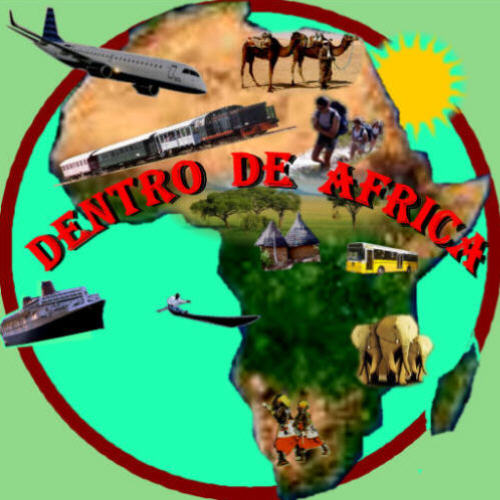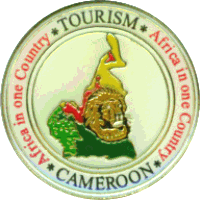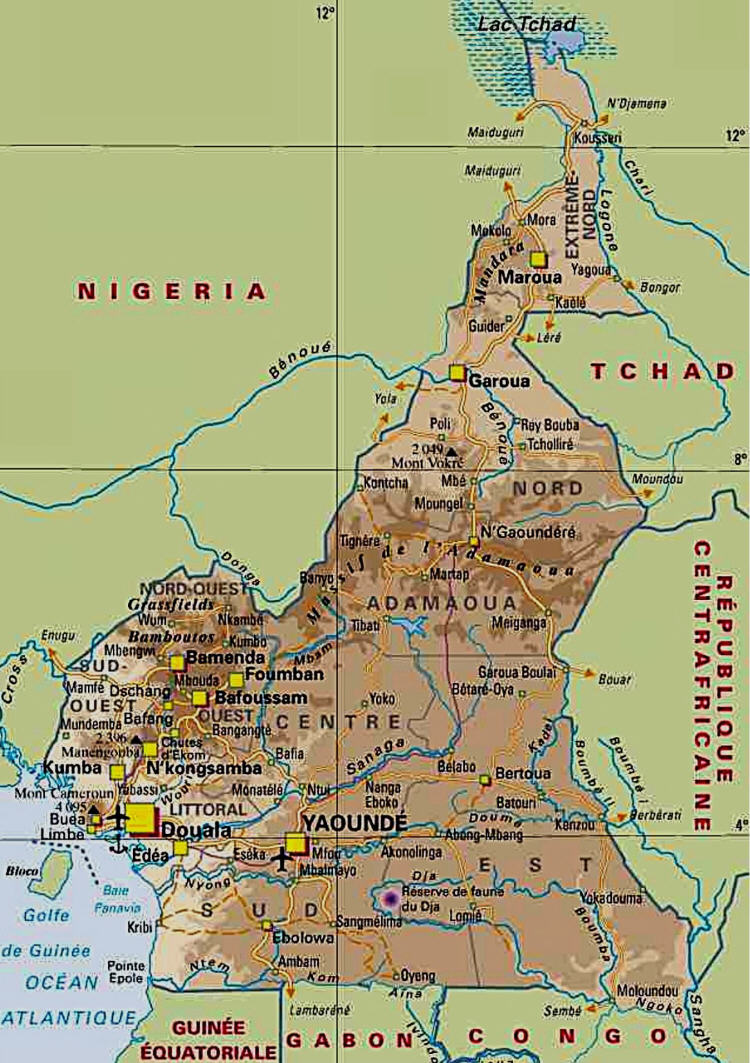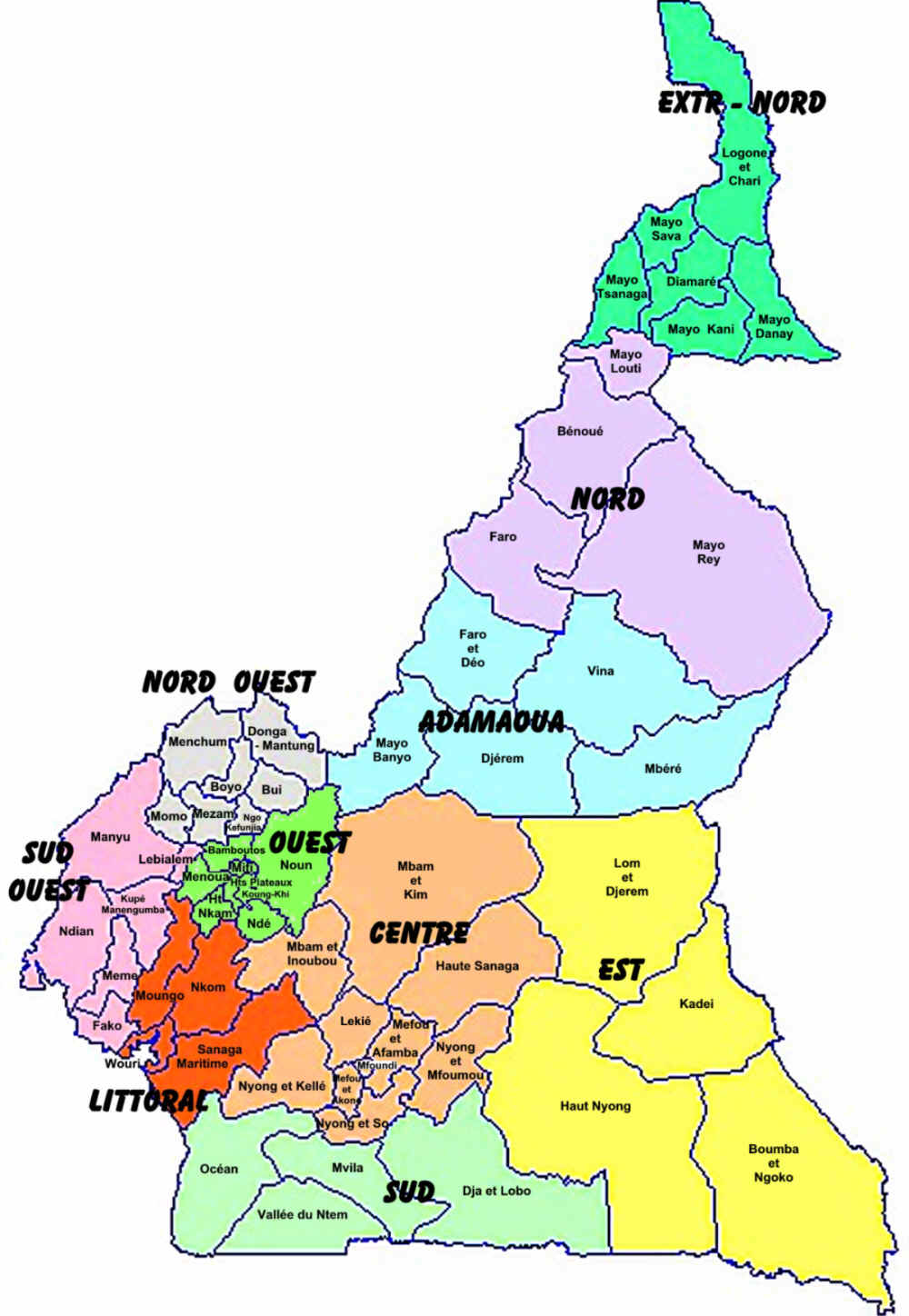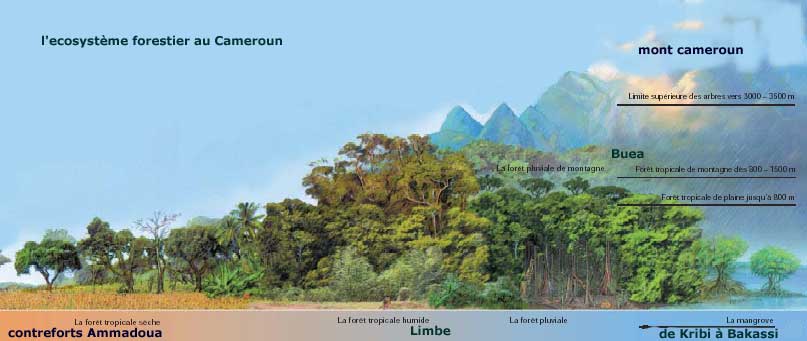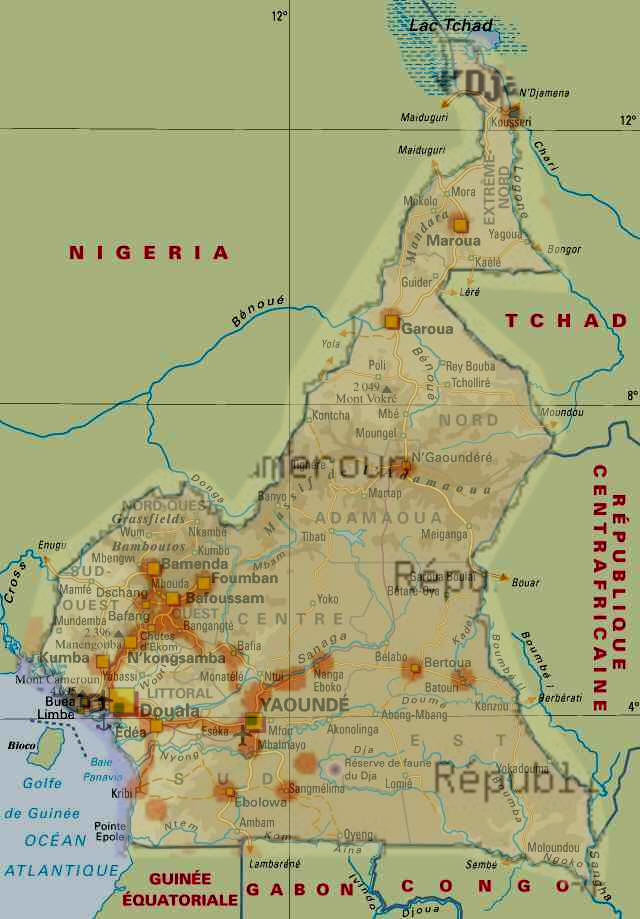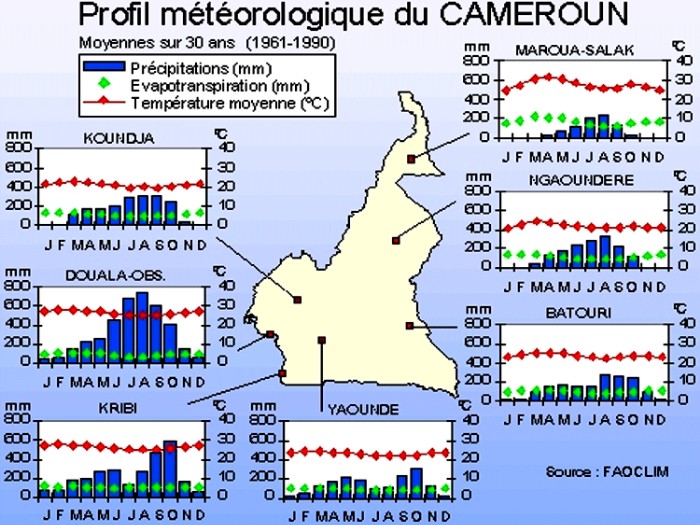|
|
||
|
CAMEROON: AFRICA IN MINIATURE
|
||
|
Mount Cameroun |
||
|
Cameroon is situated in central Africa. Open to the sea, the country stretches from Lake Tchad to the Atlantic coast, and from equatorial Africa to the furthermost reaches of the Sahara region.
Cameroon is surrounded by Nigeria, Tchad, the Central African republic,
Congo, Gabon and Equatorial Guinea.
-Surface area: 475 442 km² -Administrative divisions: 10 regions,
58 divisions, 275 sub-divisions, 53 districts
-official language: English and French
-capital: Yaoundé
-flag : green-red-yellow,with a golden star in the red band
Shaped like a triangle in the heart of Africa, the country has an original relief. The most prominent feature of Cameroon is the Adamawa massif .
It separates the north from the south, thus serving as a link between various landscapes of the country .
In the south, thick tropical forests of the coastal plain and the hinterland are a pleasant sight to the traveller. In the north, the barren stretches of the savannah and the steppe are dominant landscapes right to the marshes that border lake Tchad .At a height of 1.370 m ,the Adamawa plateau overlooks the Benoue plain to the north and to the west along the border with Nigeria .
Higher in the great western and northern regions, the Adamawa massif
rises to 2.460m.In the south are high volcanic mountains including mount
Cameroon(“the chariot of gods”) which peaks at 4.095m. Cameroon’s climate corresponds to two climatic types . - The north and the far north experience a tropical climate with little precipitations; 650 to 1.500mm of rainfall per year and high temperatures; 30° centigrade average which rise as you get closer to the northern arid lands . - The south Cameroon ,the west and the coastal plain enjoy an
equatorial climate with abundant and regular rainfalls and constant
temperatures (26° centigrade on average).
|
 |
|
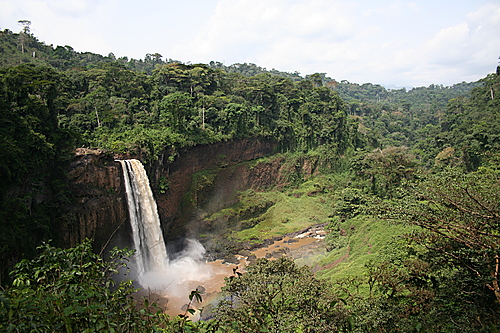 |
||
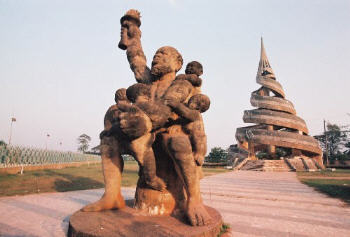 |
||
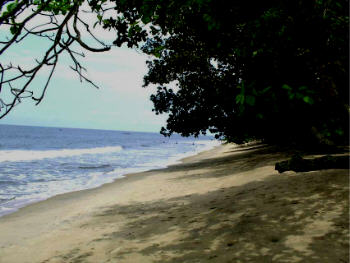 |
The traveller whose dream is to return to his origin feels in perfect harmony with nature and its treasures .
The south is covered by a luxuriant equatorial rain forest with numerous and varied species . Between the forest and the “savannah”, there is a transitional zone made up of mosaic of landscapes where savannah grass fields alternate with forest. The sudanian savannah made up of wooded grass fields, thin and dry forests on the foothills of the Adamawa massif .
The north is home to the thorny sahelian steppe where the acacias
abound. Finally, the highest regions have specific and tiered vegetation:
sub-mountain and mountain forests and the sub-alpine prairies found on
mount Cameroon and at above 2.500m. Every path leads to a discovery.
Cameroon’s landscape is constantly changing, from lunar mountains to white sand beaches. Crossed by great rivers, the tropical forest reigns in the south and the east. The southern coast around kribi known as Cameroon’s “côte d’azur”, decorated by palm-sheltered golden sand beaches that idle strollers find delightful .
Finally, in the south west, mount Cameroon ,an active volcano, rises majestically above the sea with its famous black sand beaches . The mountain’s volcanic activity contributes to Cameroon unique
colours.
Cameroon has the richest fauna in central Africa with its nine
national parks and several reserves. The northern savannah is home to
animals (lions, giraffes, elephants, rhinoceros, etc) while the northern
forest and rivers are the favourite playground for gorillas, chimpanzees
and others.
More than 250 ethnic groups live in Cameroon; they mix and share their millennium-old cultures and traditions .The main ethnic groups in Cameroon are Sudanese, fulbe, Arab Choas in the north, pygmies and Bantus in the south, semi-bantus (bamilekes, bamoun, tikars) in the west.
|
|
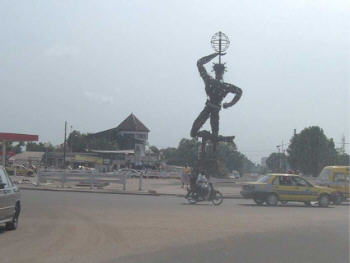 |
||
|
Cameroon ethnic diversity makes it a country of rich and vibrant traditions.
Each region has a specific type of folklore, handicraft, habitat and life styles. In the south, storytellers and epic poets are the memory of traditions.” bafia” ,”bikutsi” and “assiko” ballet dances as well as other dances transport the visitor to a world of dreams and ancestral myths .
In the west, bamilekes dancers enchant the eyes with their masks and costumes. The north is the land of “fantasia» with its frantic cavalcades. Handicrafts are links between traditions and modernity.
The north and the North West are the pride of Cameroon’s art. The towns of Foumban, Bafoussam and Bamenda are well known for their
masks, embroidered costumes and other statuettes.
Cameroon’s economy is sustained by fertile lands.
The wide range of food grown throughout the country reveals the agricultural potential of the country. The main resources are cocoa, coffee, cotton, rubber and timber.
Thanks to its agricultural production, Cameroon is food self-sufficient.
The production of Hydrocarbons is a real source of development. Cameroon became the third African producer in the south of Sahara as
from 1980.cameroon has industries that process agricultural products:
coffee mills, sugar, shelling plants, cotton spinning and weaving
factories, palm oil works and latex manufacturing factories.
Cameroon cultural diversity is unique in Africa. The country is a real Africa in miniature, thanks to this exceptional heritage.
|
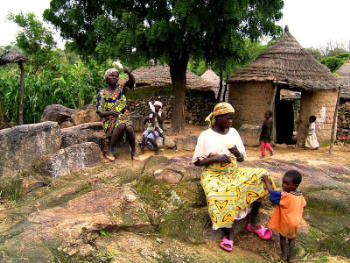 |
|
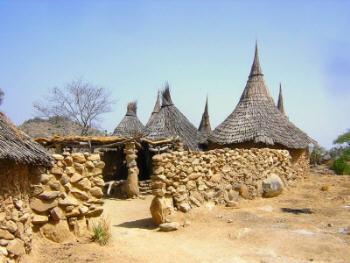 |
||
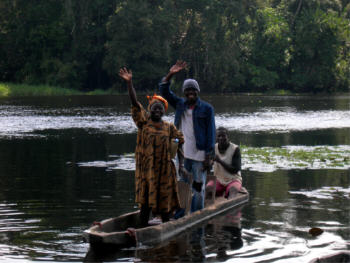 |
||
|
SOME CHARTS and OTHER DESCRIPTIONS of CAMEROUN RELIEF MAP
|
||
|
ADMINISTRATIVE MAP of CAMEROON provinces and departments
|
||
|
ECOSYSTEM in CAMEROON
|
||
|
the NETWORK of PORTABLE TELEPHONES : Orange, MTN, Camtel (on orange, the covered zones)
|
||
|
SEASONS in CAMEROUN |
||

